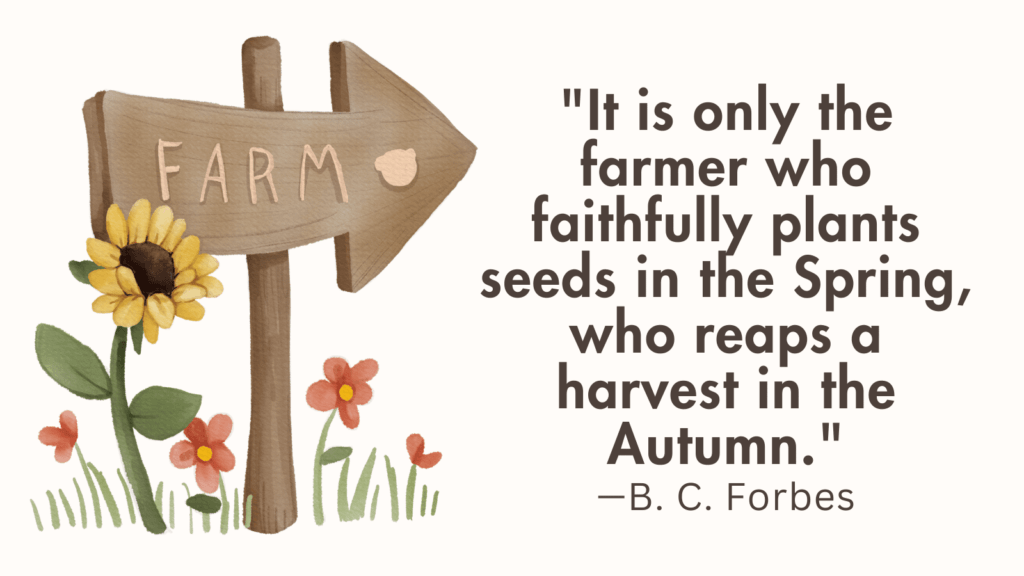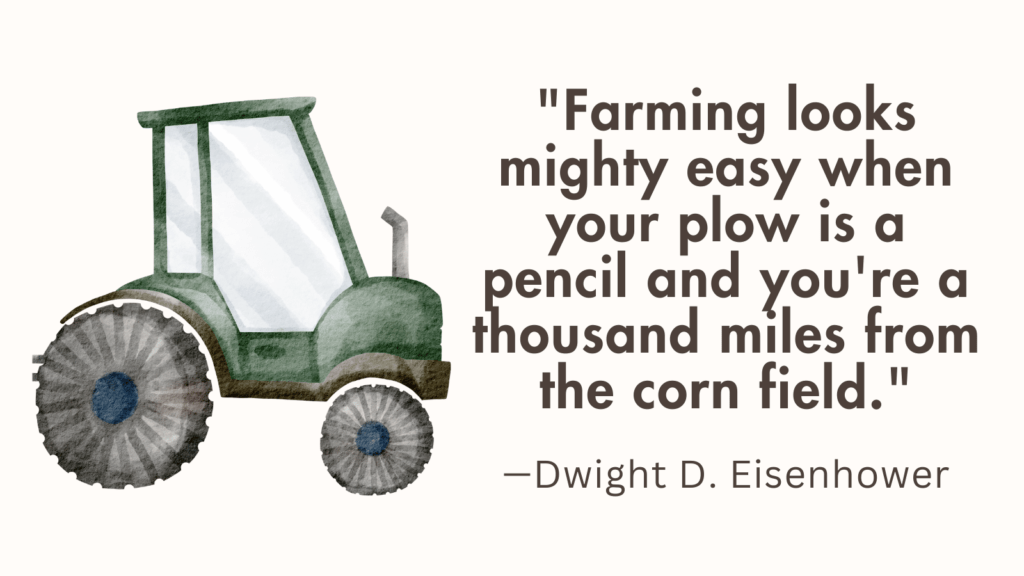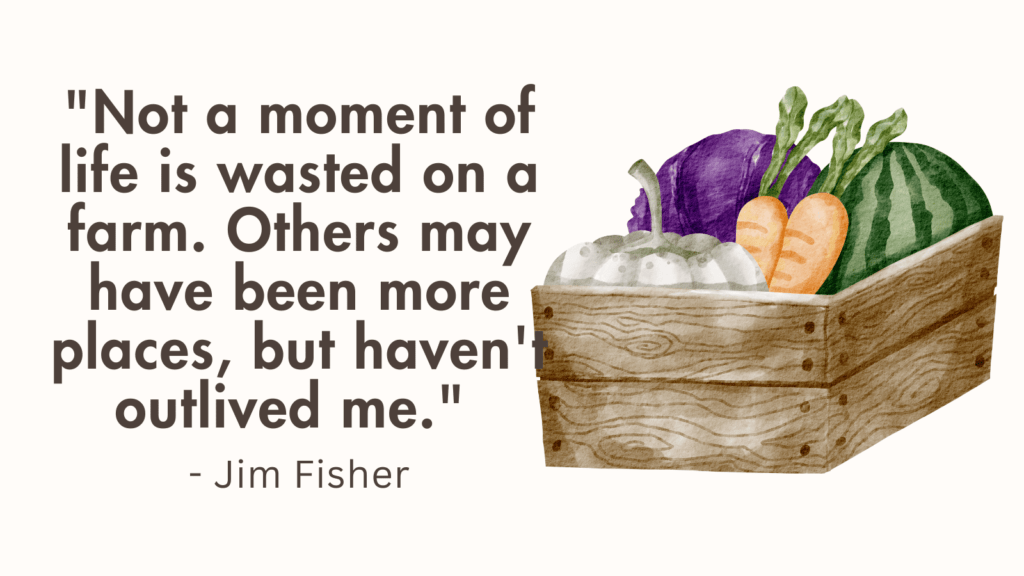In this post, you’re going to learn how to start farming with no money.
How To Start Farming With No Money?
Starting a farm with no money can be challenging, but it’s not impossible.
Here are some steps to consider if you’re interested in starting farming with limited financial resources:
1. Research and Plan
Begin by researching different types of farming and identifying the specific type that aligns with your interests, skills, and available resources.
Consider factors such as land requirements, climate suitability, market demand, and profitability.
Develop a detailed business plan that outlines your goals, strategies, and financial projections.
2. Utilize Available Resources
Look for local government programs, grants, or loans that support new and aspiring farmers.
Some organizations offer assistance specifically for those starting farming ventures with limited capital.
Additionally, seek opportunities for land-sharing or leasing arrangements, where you can access land resources without the upfront costs of purchasing property.
Related: Does Contour Farming Work Everywhere?
3. Start Small and Scale Up
Begin with a small-scale operation and gradually expand as your resources and experience grow.
This approach allows you to manage costs more effectively, minimize risks, and learn valuable lessons along the way.
Focus on high-value crops or niche markets that offer better profit margins and quicker returns.
4. Collaborate and Network
Building relationships and collaborating with other farmers, agricultural organizations, and community groups can be beneficial.
They may provide mentorship, shared equipment, cooperative marketing opportunities, or access to communal resources, reducing your initial investment needs.
Related: Will Chickens Stop Laying If Coop Is Dirty? [Raising Chickens Complete Guide]
5. Use Sustainable Farming Practices
Implement sustainable farming techniques that minimize input costs and maximize productivity.
For example, practice organic farming, use compost or natural fertilizers, conserve water through efficient irrigation methods, and employ integrated pest management strategies.
These practices can reduce reliance on expensive inputs and enhance the long-term viability of your farm.
6. Explore Direct Marketing Channels
By selling your products directly to consumers through farmers’ markets, community-supported agriculture (CSA), or online platforms, you can eliminate the middleman and capture higher profits.
Direct marketing allows you to build relationships with customers, receive feedback, and adapt your offerings based on market demands.
Social media can be an effective tool for reaching potential buyers at minimal cost.
Related: How to Protect Your Watermelon Farm?
7. Embrace DIY and Resourcefulness
Be resourceful and seek low-cost or free alternatives for farm infrastructure and equipment.
Utilize recycled materials, repurpose existing structures, borrow or rent equipment as needed, and explore DIY approaches to tasks like building fences, constructing shelters, or repairing machinery.
Sweat equity and creativity can go a long way in minimizing expenses.
What Is A Collective Farm?
A collective farm, also known as a cooperative farm, is an agricultural organization where land, equipment, and resources are collectively owned and managed by a group of farmers or members.
In a collective farm, individuals pool their resources, labor, and expertise to work together towards a common goal of agricultural production and economic sustainability.
Collective farms often operate under a specific set of principles, which can vary depending on the organization and its objectives.
These principles commonly include shared decision-making, equal distribution of profits or benefits, communal living and dining arrangements, and a focus on social and environmental responsibility.
The main aims of collective farming are to increase productivity, improve resource allocation, reduce individual risk, and promote cooperation among members.
By working collectively, members can efficiently utilize machinery, share knowledge and skills, access larger markets, and benefit from economies of scale.
While collective farming models have been successful in some regions and historical contexts, it’s important to note that there have been various challenges associated with this approach.
Issues like labor motivation, lack of individual incentives, resource allocation disputes, and inefficient decision-making processes have been identified as potential drawbacks.
Overall, the viability and success of a collective farm depend on factors such as the commitment and cooperation of its members, effective management practices, supportive government policies, market conditions, and the specific context in which it operates.
Related: Garden Tool Box [Complete Guide + Resources]
FAQ
How can I acquire farm equipment without spending too much money?
Acquiring farm equipment can be costly for new farmers.
Consider buying second-hand equipment or leasing options instead of purchasing new.
Explore equipment sharing programs or co-operatives in your area.
In some cases, it might be feasible to rent equipment for specific tasks or seek partnerships with other farmers who already own the necessary machinery.
How much land do I need to start a farm?
The amount of land needed depends on the type of farming you plan to do and your specific goals.
For small-scale vegetable or fruit production, a few acres or even less can be sufficient.
However, livestock or crop farming may require more land.
It’s essential to consider factors such as crop rotation, pasture management, and future expansion when determining land requirements.
Related: Why Do You Plant Rosemary By Your Garden Gate?
How do I fund my farm startup costs?
Funding options for farm startups include personal savings, loans from financial institutions, agricultural grants, crowdfunding, partnerships, or seeking investors.
Additionally, some government programs offer assistance specifically for new farmers.
Look into local resources, organizations, and grant opportunities that can provide financial support for farming ventures.
What kind of crops or livestock should I start with?
The choice of crops or livestock depends on several factors such as market demand, climate suitability, your skills and interests, and available resources.
Research potential markets and identify high-value crops or niche products that have good market potential.
Consider factors like sustainability, profitability, and adaptability to your local conditions.
Do I need any licenses or permits to start a farm?
Licensing and permit requirements vary depending on your location, the type of farming activities, and the scale of your operation.
It is crucial to research and understand the local regulations regarding land use, water usage, environmental impact, animal welfare, food safety, and direct marketing.
Contact local agricultural offices, extension services, or regulatory agencies to ensure compliance with all necessary permits and licenses.
Related: Do Rabbits Eat Mint In The Garden?
How do I manage the financial aspect of a farm business?
Managing the finances of a farm business involves careful budgeting, tracking expenses, and keeping accurate records.
Invest in accounting software or work with a professional accountant to manage bookkeeping and financial planning.
Regularly review your income and expenses, create realistic sales projections, and develop contingency plans for unexpected expenses or fluctuations in market prices.
Conclusion
Remember, starting a farm with no money requires patience, persistence, and a willingness to learn.
It’s important to carefully manage your budget, continuously educate yourself about farming practices, and adapt your strategies based on real-world experiences.
With dedication and hard work, you can gradually grow your farm business and achieve success.

Garden Cart
*As an Amazon Associate I earn from qualifying purchases, at zero cost to you, if you click through the link and finalize a purchase.





